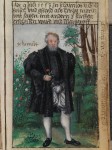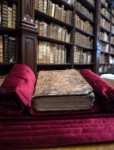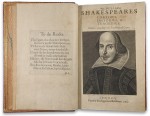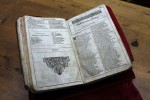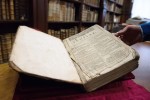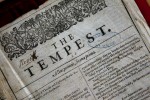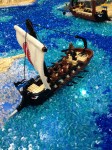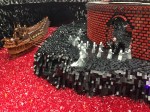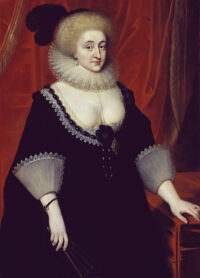 While menu planning for the upcoming meal events that traditionally feature any number of pies, consider Elizabeth Grey, Countess of Kent’s potato pie from her 1653 cookbook
While menu planning for the upcoming meal events that traditionally feature any number of pies, consider Elizabeth Grey, Countess of Kent’s potato pie from her 1653 cookbook
A True Gentlewomans Delight: Wherein is contained all manner of Cookery: Together with Preserving, Conserving, Drying and Candying, Very necessary for all Ladies and Gentlewomen.
Elizabeth Grey was one of Queen Elizabeth’s attendants before her marriage, and one of Queen Anne of Denmark’s favorites after. She was also a good friend of the indomitable Lady Anne Clifford. As an aristocrat at the courts of two queens, Elizabeth Grey didn’t really do a lot of hands-on cooking herself. She was, however, an avid collector of recipes both medicinal and culinary. After her death in 1651, her collection of medical recipes was published and was so popular it went through 22 editions. Piggybacking off the countess’ posthumous success as a home pharmacologist, publisher W.J. Gent had a runaway success with her collection of cooking recipes. It was a huge best-seller as well, going through 21 editions in 55 years.
She didn’t actually write any of these books, as she was dead at the time, and there’s a solid chance the cookbook’s recipes weren’t so much collected by her as written by her chef, Robert May, or made up by Gent himself. Attribution to Elizabeth Grey mattered far more as a promotional tool than on any factual basis. Increasing literacy and average incomes created a burgeoning market among consumers with a little money in their pockets hoping to get their piece of the lifestyles of the rich and famous.
So back to her potato pie. The potato was a recent arrival on European shores, imported from the Americas. The ones Elizabeth used would have been more like a sweet potato than the Yukon golds we see on the Thanksgiving table today. It was an exotic vegetable, expensive and in this pie paired with other pricey imports like spices, dates and sugar. The recipe:
A Potato Pie for Supper
Take three pound of boyled and blanched Potatoes, and 3 Nutmegs, and half an ounce of Cinnamon beaten together, and three ounces of Sugar, season your Potatoes, and put them in your Pie, then take the marrow of three bones, rouled in yolks of Eggs, and sliced Lemon, and large Mace, and half a pound of butter, six Dates quartered, put this into your pie, and let it stand an hour in the oven; then make a sharp caudle of butter, Sugar, Verjuyce, and white Wine, put it in when you take your Pie out of the oven.
Three whole nutmegs seems like it would be, well, insane, so I hope she means three measures of some sort. Verjuice is a sour juice derived from squeezing crab apples and unripened grapes. It was common in 17th century cooking. A caudle is a hot, thick drink ranging from an eggnog consistency to a thin porridge consistency.
The Getty has drawn up a simpler modernized version of Elizabeth Grey’s potato pie. There’s no bone marrow in it (sad) and a lot less nutmeg (happy!), so it’s a sweet potato pie that is very much congruent with modern iterations. I vote put the marrow in and see what happens.
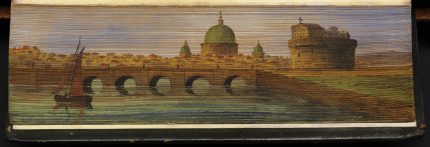

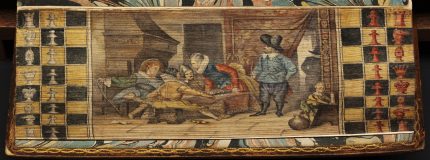
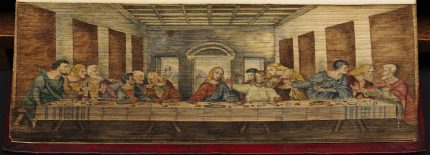
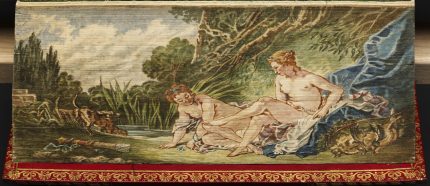
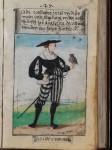


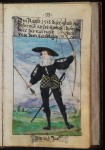

![“In March 1523 – An evening dress, the short cloak with taffeta, the doublet made from silk satin, the gray over-hose can be fitted over any hose. Hose with much green [...] small bells all around, with Matheus Herrtz, Andreas Koler, and Wolf Breitwiser. 26 years, ½ month.” © The Herzog Anton Ulrich Museum, Braunschweig.](http://www.thehistoryblog.com/wp-content/uploads/2015/11/Bild-60-107x150.jpg)
![“In June 1524 – Three types of Prussian leather as hose and over-hose, everything as shown, without doublet, but three kinds of shirts. The middle one [has attached to it] an 8 minute hour-glass on the thigh. 27 years, 22 weeks.” © The Herzog Anton Ulrich Museum, Braunschweig.](http://www.thehistoryblog.com/wp-content/uploads/2015/11/Bild-68-70-98x150.jpg)

!["On 12 August 1545, this was my armor when we were inspected, around 4,500 [men]… on foot and 500 on horses, who stood in the field near the gallows for ¼ hours, 71 people in one rank in this colour. Aged 48 years, 29 weeks." © The Herzog Anton Ulrich Museum, Braunschweig.](http://www.thehistoryblog.com/wp-content/uploads/2015/11/Armour-112x150.jpg)
